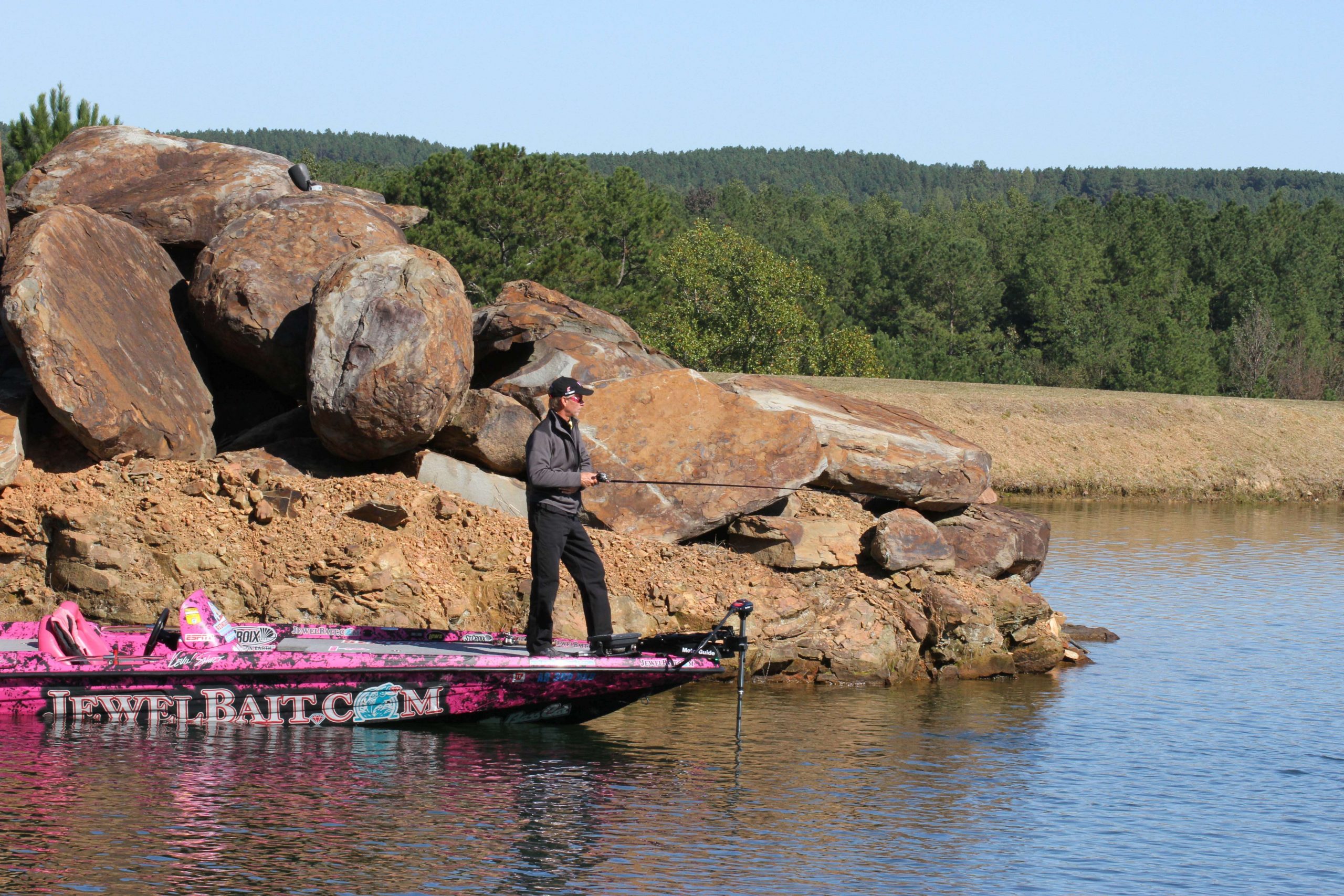
Don’t buy into the myth that all the bass move into deep water during the late fall and early winter. Assuming that your lake or reservoir isn’t covered over with ice, there are still plenty of bass shallow. In fact, some of the best fishing I’ve ever experienced is in five feet of water or less — after Thanksgiving.
Start with stained to dirty water and then look for rock. Anything from golf ball size on up to grapefruit size is what you want … and they need to be covered in algae. This approach is about finding the forage, not the bass. I compare it to looking for an owl. Don’t worry about him. Find a mouse. The owl won’t be far away.
Along with rocks, you need deep water nearby. A creek channel or sharp drop is perfect.
Most of these areas will be located in the upper half of a lake or reservoir. The water in that half is usually darker and carries more nutrients. That allows the algae to grow, which in turn attracts the shad. Plus, there are usually several creeks in that part of the lake that’ll provide deep water.
Weather and water temperature play a part in finding early winter shallow bass. The areas I’ve described will hold bass until the water temperature drops between 45 and 50 degrees. After that the shad start to die and the bass move out into the deeper water. But — and this is an important but — on warm, sunny days throughout the rest of the winter, the shad that survive will move up into the rock, and the bass will follow. Don’t waste that opportunity just because the air has an edge to it.
My favorite bait for this type of fishing is a flat-sided, square bill crankbait. I typically throw a WEC E3 or a Strike King 2.5. Most of the shad will be bigger — at least 3 inches long. I want a big bait to match the hatch and attract the biggest predators.
Line choice is critical. This is not a finesse thing. The lightest I would ever go would be 12-pound-test, and usually I go heavier than that. I want to keep the bait down without hanging it on everything in the water.
I sometimes throw fluorocarbon to help pull the bait down, but sometimes I go with monofilament to help keep it up. Line diameter affects things, too. Fatter line pulls your bait up. There’s no formula for this. You have to play around until you find the combination that works. My preference is Vicious line. Quality and consistency matter. I don’t want to take a chance on losing a big fish.
My rod is a St. Croix 7 foot, 4 inch Mojo Bass Glass Crankster. It’s a forgiving fiberglass rod that as far as I’m concerned is the best crankbait rod ever made. My reel is a Lew’s Tournament Pro (6.4:1 gear ratio).
I sometimes use a snap with my bait, and occasionally an oblong split ring. I never use a round snap ring, however. It does something to the action of a flat-sided square bill — something that bass don’t like. Cranking speed depends on water depth. Crank fast enough to keep the bait in contact with the bottom and to allow it to deflect off the rock. That’ll get you the most bites.
Don’t despair if you’re deep water challenged. There’s still plenty of time to catch them shallow.




